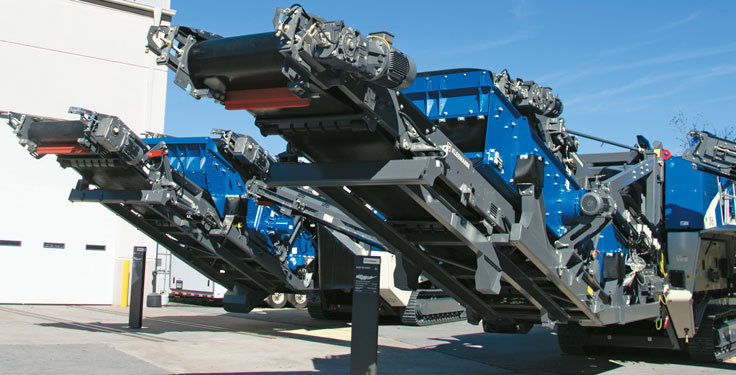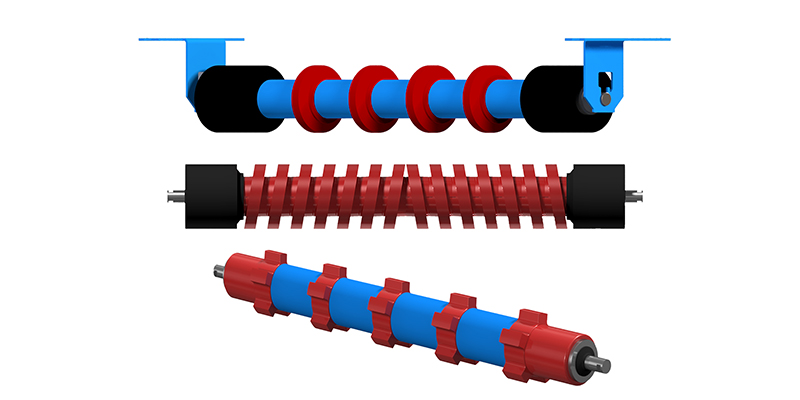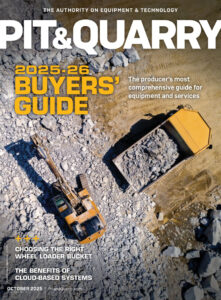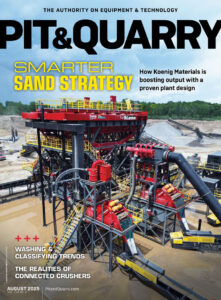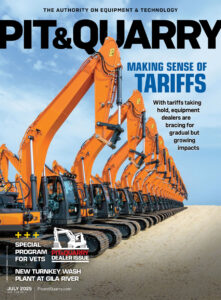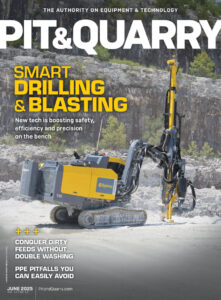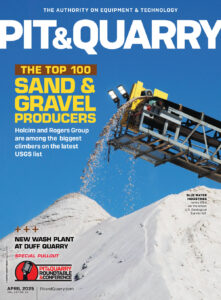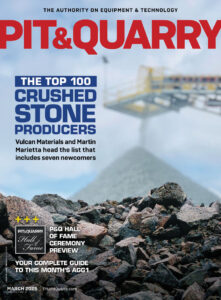While tariffs were a dominant topic of discussion for businesses in the first half of 2025, their full economic impact has yet to materialize.
Equipment manufacturers, unsurprisingly, are keeping tabs on tariff developments. Aggregate producers are also interested in what’s ahead, but many remain focused on their daily operations, especially with production at its seasonal peak.
The industry’s equipment dealers, meanwhile, are eagerly awaiting answers to a range of tariff-related questions. How much higher will equipment prices rise? Are equipment shortages looming? And how might the manufacturing landscape evolve in the years to come?
A complete resolution is not yet in sight, leaving dealers – and others up and down the supply chain – left to wait and wonder.

“Tariffs are going to, to some extent, start impacting most manufacturers and most dealers – especially when it comes to mobile equipment, where the majority is manufactured either partly or in whole in [Northern] Ireland,” says Micah Tysver, president of Crush Mode. “There’s a 10 percent tariff on [Northern] Ireland for U.S. trade right now. So, to some extent, it’s going to impact the majority of U.S. mobile equipment dealers.”
Similarly, Mark Strader is bracing for the impact. Still, he sees potential long-term benefits for some suppliers.
“We’ve been fortunate in that the particular country we import gear from (Germany) has reached a somewhat decent agreement with the U.S.,” says Strader, vice president, sales manager of crushing and screening at Brandeis Machinery and Power Equipment. “So, we haven’t had any real negative impacts. But tariffs will certainly level the playing field more with respect to the Chinese. I do believe it will equal the playing field for the rest of us out there.”
Rock Machinery president Bryant Fazer also anticipates change. And while some reshoring may take place, he expects production of certain components, such as large castings, to remain overseas.

“There are certain things, due to EPA regulations, that we’re not going to be able to produce here anytime soon,” Fazer says. “I don’t think we want to produce some things here because of regulations – your large-scale manganese foundries, for instance. There’s not a domestic foundry here in the United States or Canada, so you’re forced to go to Central America, Mexico, South America, Asia or Eastern Europe to get it done. I don’t see that coming back.”
That said, Fazer expects manufacturers to reevaluate their production processes as tariffs take effect.
“Some manufacturers are going to have to take a hard look at bringing it back,” he says. “I think that’s good for the U.S. economy, no matter what.”
The short term
Fortunately, tariffs have had little to no immediate impact on industry businesses – in part because equipment supply remains relatively strong across the U.S.
Many producers got ahead of tariffs by making major equipment investments and boosting parts inventories in recent years. Manufacturers and dealers also had time to stock up.
Still, dealers anticipate the effects of tariffs to eventually surface, particularly given the continued strength in demand for construction materials. This, in turn, will spur demand for new equipment.

“When it comes to crushing and screening gear specifically, we’re finding things to be very flat year-over-year through the first quarter and almost two,” Strader says. “People are still spending money. But bear in mind: We’ve had record years for the last few years – and not just us, but everyone.
“We remain cautiously optimistic that there’s plenty of runway ahead,” he adds. “As long as conditions stay relatively stable and we can get past this tariff issue, we think people will keep spending. There’s plenty of work out there – both private and public.”
Manufacturers, for their part, are already taking steps to mitigate any economic pain tariffs may bring.
“Manufacturers are reacting and getting as much into the U.S. as they can during this grace period,” Fazer says.
Still, Fazer is surprised there hasn’t been more downstream response.
“There are some customers who are reacting, but I would have expected more,” he says. “Inventory on the ground right now is a better value than the inventory that’s going to arrive in a few months.
Generally, everyone can be expected to absorb added costs.
“If you ask customers, they’ll tell you the supply chain probably isn’t much of an issue because inventory has been pretty readily available,” Tysver says. “But as dealers are funneling out their inventory and reordering for their 2025 fleets and moving forward, we will start to feel some of the effects of these tariffs coming on.”
Tysver currently has equipment on order and expects some financial impact from tariffs – but nothing too disruptive.
“It’s not going to drastically impact anybody because the manufacturer is going to participate and the dealer is going to participate,” he says. “We can’t expect to stick the customer with all these tariffs. We’re all going to feel it to some extent, but it’s going to work out and I don’t think it’s going to be a significant factor.”
In the near term, Strader could see producers turn to the used equipment market to avoid paying more.
“There’s a lot of used equipment being bought and sold in the U.S. right now,” he says. “So, I think any real impact from tariffs is going to be delayed a bit. If you’re about to spend $1 million on a new track-mounted crusher and you can find one that’s lightly used instead, you’re going to end up looking at purchasing that used machine versus one that already has a nice price tag on it plus a tariff on top of it.”

